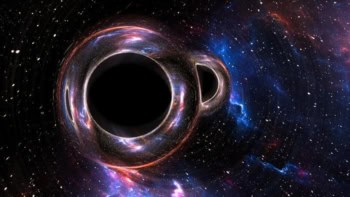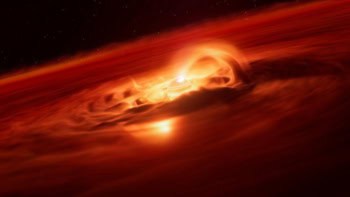Physicists are closer to understanding how ultrahigh-energy cosmic rays make their way to Earth thanks to new measurements made at the Pierre Auger Observatory in Argentina. The study shows that the number of such cosmic rays reaching Earth drops off rapidly for rays with energies of more than about 4 x 1019 eV.
The observations are consistent with a 40-year-old theory that ultrahigh-energy cosmic rays cannot travel very far through the universe without losing energy as they scatter off the cosmic microwave background (arXiv:0806.4302v1).
A similar fall in the number of such rays reaching Earth was seen earlier this year in a separate measurement made by the HiRes observatory in Utah, US ( Phys Rev Lett 100 101101) . The rapid drop-off in both studies appears to contradict earlier measurements made elsewhere, which suggested that there is no fall in the number of ultrahigh-energy cosmic rays at very high energies.
Slowed by the CMB
Ultrahigh-energy cosmic rays (UHECRs) are charged particles (believed to be mostly protons) with energies greater than about 1018eV. Above a certain energy threshold, they are expected to interact with the cosmic microwave background — the remnants of light that was given off shortly after the Big Bang — putting a limit on how far the most energetic cosmic rays could travel before reaching Earth.
Called the Greisen-Zatsepin-Kuzmin (GZK) supression after the three physicists who first proposed it in 1966, the theory has also been been backed up by Auger team’s recent observation that UHECRs seem to emanate from black holes lying at the heart of nearby galaxies.
However, because UHECRs are very difficult to detect, there is currently some debate as to whether the GZK effect has actually been confirmed observationally — in particular whether the suppression begins at about 6 x 1019 eV as originally predicted.
The AGASA mystery
Indeed, several early UHECR studies have discovered particles from apparently distant sources with energies greater than 1020 eV. In particular, the Akeno Giant Air Shower Array (AGASA) in Japan recorded many events with energies well above the GZK threshold.
However earlier this year, the HiRes cosmic ray observatory in the US claimed the first observation of GZK suppression at about 6 x 1019 eV. The measurement was made using data from two detector stations taken over nine years of clear, moonless nights — during which thousands of UHECRs were detected.
Now, the HiRes claim appears to be backed up by an analysis of about 20,000 UHECR events detected by the Pierre Auger Observatory from January 2004 to August 2007. The Auger data shows a significant drop in the number of UHECRs detected at energies greater than about 4 x 1019 eV.
Nature often sets us these traps!Alan Watson, Pierre Auger Observatory
However, unlike the HiRES collaboration, which claimed to have found the first real evidence for GZK, the Auger team has taken a more cautious approach. Emeritus Auger spokesman Alan Watson of the UK’s Leeds University told physicsworld.com that neither the HiRes nor the Auger results should be seen as confirmation of GZK. Instead, he argues that both simply show a marked reduction in the number of higher-energy UHECRs reaching Earth. An alternative explanation, according to Watson, is that UHECR sources are not very efficient at creating the highest energy cosmic rays . “Nature often sets us these traps!”, he said.
Others, however are more confident in the GZK interpretation of the HiRes and Auger results. Venya Berezinsky of Italy’s Gran Sasso Laboratory told physicsworld.com that the HiRES energy spectrum in particular is consistent with the GZK theory.
As for the surfeit of higher energy events in the AGASA data – Watson believes that this could be a result of certain assumptions of particle physics that are needed to interpret the results of that experiment. These assumptions made are at energies beyond those currently accessible in particle accelerators, and therefore are largely unproven. Some light could be shed on this problem by the Large Hadron Collider (LHC), which is due to start at CERN next month. The LHC includes a small experiment called LHC Forward (LHCf), which aims to gain some understanding of cosmic rays.
The Auger team have now turned their attention to determining the mass of UHECRs — how many are protons and how many are helium nuclei, for example — which could have an effect on predictions of the UHECR energy spectrum.



